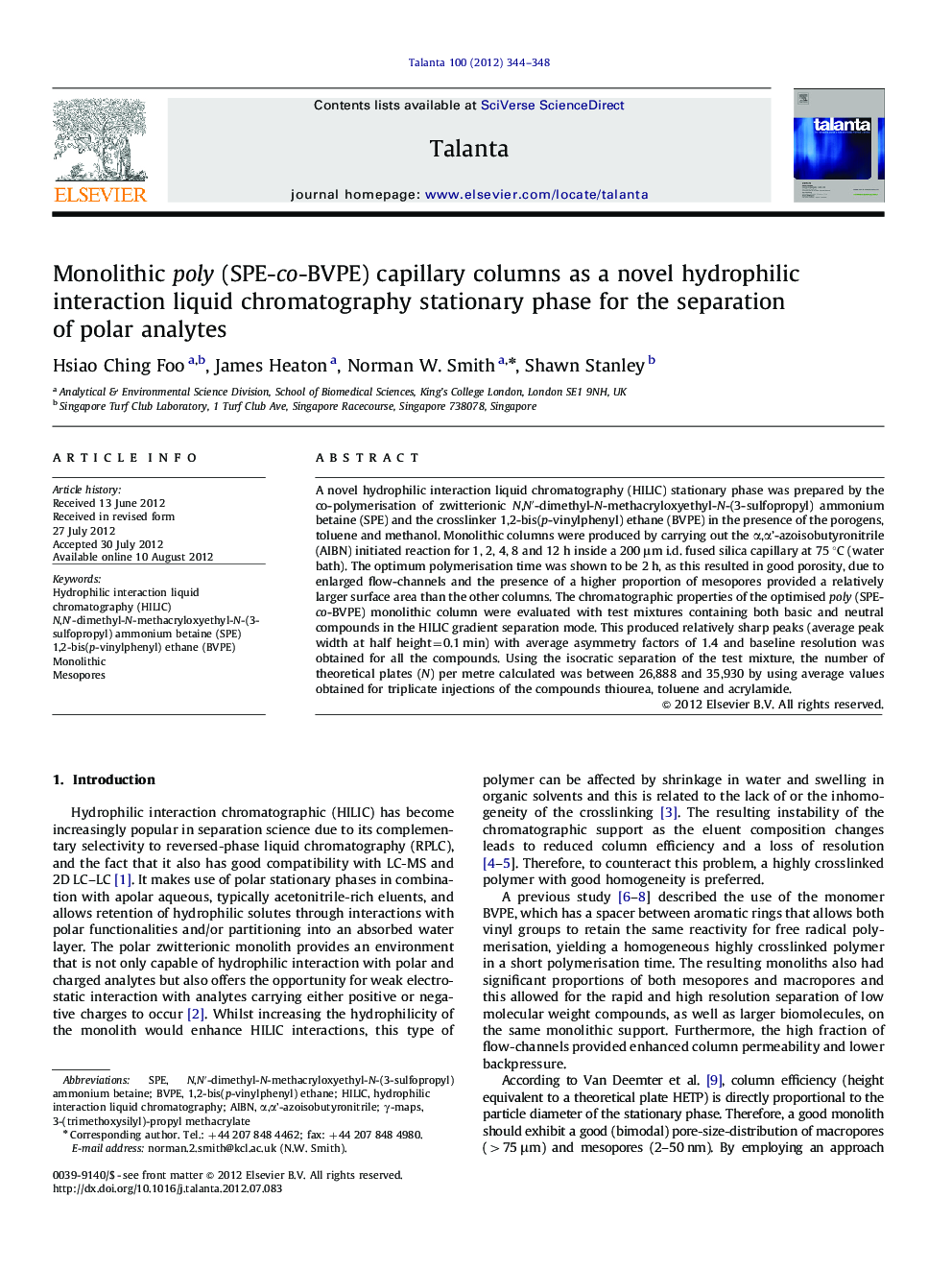| Article ID | Journal | Published Year | Pages | File Type |
|---|---|---|---|---|
| 7684759 | Talanta | 2012 | 5 Pages |
Abstract
A novel hydrophilic interaction liquid chromatography (HILIC) stationary phase was prepared by the co-polymerisation of zwitterionic N,Nâ²-dimethyl-N-methacryloxyethyl-N-(3-sulfopropyl) ammonium betaine (SPE) and the crosslinker 1,2-bis(p-vinylphenyl) ethane (BVPE) in the presence of the porogens, toluene and methanol. Monolithic columns were produced by carrying out the α,α'-azoisobutyronitrile (AIBN) initiated reaction for 1, 2, 4, 8 and 12 h inside a 200 μm i.d. fused silica capillary at 75 °C (water bath). The optimum polymerisation time was shown to be 2 h, as this resulted in good porosity, due to enlarged flow-channels and the presence of a higher proportion of mesopores provided a relatively larger surface area than the other columns. The chromatographic properties of the optimised poly (SPE-co-BVPE) monolithic column were evaluated with test mixtures containing both basic and neutral compounds in the HILIC gradient separation mode. This produced relatively sharp peaks (average peak width at half height=0.1 min) with average asymmetry factors of 1.4 and baseline resolution was obtained for all the compounds. Using the isocratic separation of the test mixture, the number of theoretical plates (N) per metre calculated was between 26,888 and 35,930 by using average values obtained for triplicate injections of the compounds thiourea, toluene and acrylamide.
Keywords
Related Topics
Physical Sciences and Engineering
Chemistry
Analytical Chemistry
Authors
Hsiao Ching Foo, James Heaton, Norman W. Smith, Shawn Stanley,
